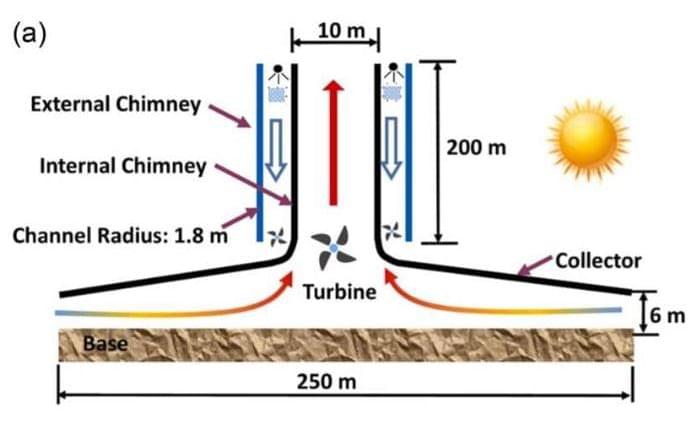If you want to improve the output of solar energy systems, why not also run them at night? That’s the question researchers in Qatar and Jordan addressed as they successfully devised a system that promises to more than double energy output of current solar power stations.
By combining two concepts—a solar updraft system and a cooling downdraft structure—researchers designed a model that could generate 753 MWh of energy annually. That’s enough to power roughly 753 homes for about five weeks or 1,500 60-watt light bulbs nonstop for a year.
The origins of the system, referred to as Solar Tower Power Plant, go back to 1982 when Spanish engineers constructed a chimney-like tower with a mechanical turbine at its base. Air within the tower was warmed by absorbing solar radiation, similar to a greenhouse. As the air heated, it created an updraft that rose and activated wind turbines that in turn generated electricity.
